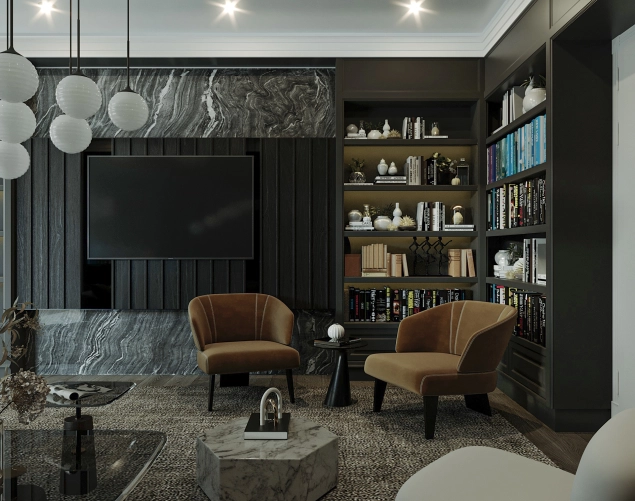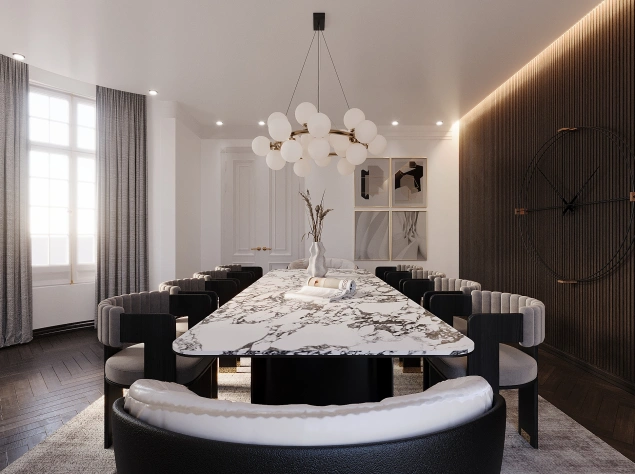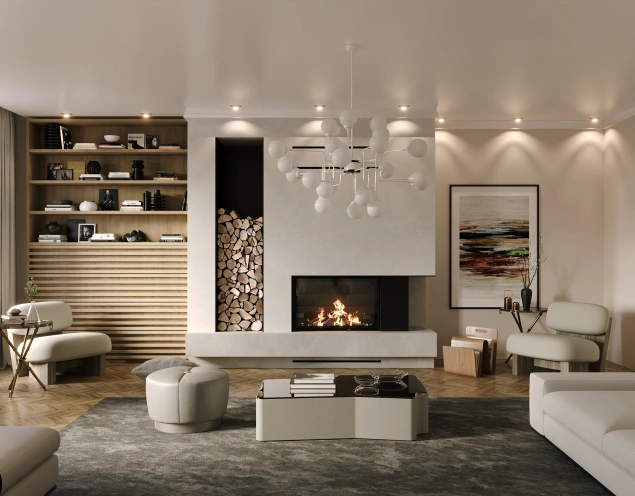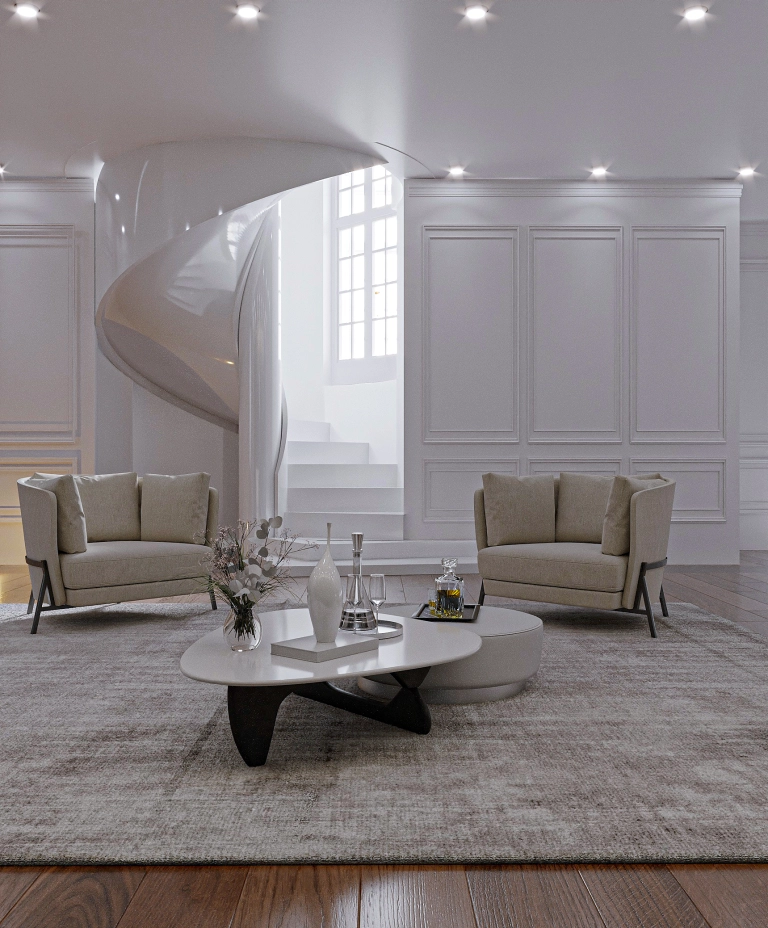Skyy Vodka Creator’s Former Manhattan Townhouse Listed for $25 Million
Maurice Kanbar, the inventor of Skyy Vodka and a former chemist, once owned an impressive townhouse in Manhattan, which recently hit the market for $25 million. The house, located at 4 East 77th Street, is nestled on the same tree-lined block as the iconic Mark Hotel and is just a stone’s throw away from the 5th Avenue entrance to Central Park. This 11,695-square-foot home is a coveted address in the Upper East Side and has plenty of unique features, making it an excellent investment opportunity for potential buyers.
Boasting over 11,000 square feet of living space, this seven-story mansion has been impeccably renovated with modern amenities while still retaining its historic charm. The townhouse features a stunning entrance gallery, a grand staircase, and a spacious formal living room with high ceilings, intricate moldings, and a decorative fireplace. The dining room is equally impressive with elegant wainscoting and a marble fireplace.
There are seven expansive bedrooms, each with its own en-suite bathroom, providing ample space for both family and guests. The master suite is a true retreat, complete with a private sitting room, a generously sized dressing room, and an opulent marble bathroom.
The townhouse also features a state-of-the-art kitchen with top-of-the-line appliances, a full-floor library, a home theater, a gym, and a wine cellar. The roof deck offers breathtaking views of the city skyline and is perfect for entertaining guests.

Situated in one of the most desirable neighborhoods in Manhattan, this townhouse is just a few blocks away from some of the city’s most iconic landmarks, such as the Metropolitan Museum of Art and the Frick Collection. In addition to its prime location, the home comes with a rich history, having been owned by one of the most successful entrepreneurs in the beverage industry. The townhouse is truly a one-of-a-kind gem that combines luxury, history, and modern amenities.
Upon entering this exquisite townhouse, visitors are immediately greeted by an oversized glass-beveled door. The foyer features beautiful mosaic-tiled flooring and sets the tone for the rest of the house. The dramatic curved staircase is the centerpiece of the grand entrance, boasting unique molding details that add to the home’s historic charm.
One of the standout features of this mansion is its magnificent bowed windows, which allow plenty of natural light to flood the space and offer stunning views of the city. The windows also add a charming architectural element to the home’s exterior.
In addition to its striking features, the townhouse’s unused rooftop presents a unique opportunity for potential buyers to create an outdoor living space, adding additional square footage and a perfect place to take in the spectacular city views.
Overall, this home is a true masterpiece of luxury and elegance, offering a blend of historic charm and modern amenities in one of the most coveted locations in Manhattan. Its impeccable attention to detail and unique architectural features make it a truly exceptional residence, not to be missed.
According to a representative from Compass, while the current configuration of the building is for mixed-use, it has the potential to be converted into a massive single-family residence. The property’s layout and features make it an excellent candidate for such a conversion, with ample space for a large family to comfortably reside and entertain within its walls.
Given its historic significance, prime location, and potential for customization, this townhouse is a rare and highly sought-after gem in the Upper East Side of Manhattan. Whether used as a mixed-use space or reconfigured as a single-family residence, it is an exceptional investment opportunity for those seeking the ultimate in luxury living in the heart of the city.
This property seems to offer a great mix of commercial and residential spaces spread out over five floors. The Michael Werner gallery would make a fantastic addition for art enthusiasts, while the 1,886-square-foot two-bedroom apartment on the third floor with two Juliette balconies and a small terrace would be ideal for someone looking for a luxurious city living experience. Additionally, the two one-bedroom apartments on the fourth floor would be perfect for individuals or couples who require a smaller space. Finally, the fifth floor’s larger terrace with South-facing views of downtown would make the second two-bedroom apartment a desirable option for those looking for a spacious yet cozy abode. Overall, this property appears to offer great options for both commercial and residential tenants.
That’s an interesting feature! An undeveloped full-height cellar could offer endless possibilities for additional space. Converting it into a rentable apartment could provide an extra source of income, while converting it into additional living space for a private home could offer an opportunity for even more luxurious living. It would be exciting to see how the space could be utilized and transformed.
Ceiling heights ranging from 9′ to over 11′ tall are impressive and add to the overall spaciousness of the building. Additionally, the 24-by-97-foot dimensions of the building are a unique feature, especially considering that they are grandfathered in since the city no longer allows them. This means that the building’s layout and size cannot be replicated, which could add to its value and appeal. It’s great that the property has these unique features that set it apart from other buildings in the area.
The location of this building on the “Gold Coast” of Manhattan is truly exceptional. The “Gold Coast” is a term coined for the section of Fifth Avenue running from 59th Street to 96th Street, and it connotes close proximity to some of the city’s most luxurious amenities. With this prime location, residents can expect easy access to some of the best establishments in the neighborhood.
One such establishment is Sant Ambroeus, an Italian eatery and coffee shop that has been a staple in the neighborhood since the 1980s. Known for its homemade pastries and delicious coffee, Sant Ambroeus has carved out a reputation as one of the city’s best spots for an authentic Italian dining experience. It’s no surprise that the eatery attracts a diverse crowd, from celebrities to locals who enjoy its comfortable atmosphere and high-quality food.

Another renowned spot just around the corner is The Carlyle Hotel’s famous Beekman Bar, which has been a fixture in the neighborhood’s social scene for decades. The Beekman Bar is a comfortable, chic spot to enjoy hand-crafted cocktails and light bites with upscale service. Its ever-changing cocktail menu showcases a creative variety of mixed drinks that keep regulars coming back for more.
Beyond these two establishments, the Gold Coast is also home to a multitude of upscale retail shops, fine dining restaurants, and cultural institutions. With unrivaled access to the best the city has to offer, residents can explore the boutiques on Madison Avenue, take a stroll through iconic Central Park, or visit one of the many museums in the area, such as the Metropolitan Museum of Art and the Guggenheim Museum.
In conclusion, the building’s location on the “Gold Coast” of Manhattan offers a unique opportunity for residents to experience the best the city has to offer. Whether dining at Sant Ambroeus, enjoying the ambiance of the Beekman Bar, shopping along Madison Avenue, or exploring the city’s cultural institutions, the possibilities are endless for those who choose to call this building home.
The building’s rich history also includes hosting notable residents and artistic exhibitions over the years. In 1897, the property was first purchased by Benjamin J. Knower and his wife, Mary Constance Allen. As socialites in Manhattan, they were known to host lavish parties and lead a glamorous lifestyle. Their time in the building has become a part of the city’s storied history.
In 1957, the building was acquired by prominent art dealer Leo Castelli, who saw the potential to transform the space into a unique venue for exhibiting contemporary art. He seized the opportunity to showcase emerging talents, and the building soon became a hub for the New York art scene. Castelli was known for hosting legendary exhibitions in the building’s grand living room, featuring works by legendary artists such as Roy Lichtenstein, Andy Warhol and Bruce Nauman, among others. The exhibitions cultivated a sense of excitement and energy for the city’s art scene and helped establish New York as a global center for contemporary art.
The exhibition space continued to be a draw for contemporary art collectors, enthusiasts, and critics well into the 1980s. In fact, the building is still celebrated as a historic landmark in the city’s cultural history. Today, it remains a symbol of the city’s creative spirit and the role that art can play in shaping a community.
Overall, the building’s storied past adds to its allure and prestige. The legacy of its previous inhabitants, particularly Leo Castelli and his contributions to the art scene, has helped shape New York’s cultural landscape and has cemented the building’s place in the city’s history.
The previous owner of this building was Maurice Kanbar, who purchased it in 1964 and called it home until his passing at the age of 93 last year. One interesting characteristic of the property is that it has not undergone any major renovations during that time. This means that the building retains its original charm and has a vintage feel that is often not found in newer buildings.
Kanbar was an inventor, entrepreneur, and philanthropist known for creating a number of innovative products, including the D-Fuzz-It sweater comb and Skyy Vodka. His impact on the spirits industry also included him starting the first distillery in San Francisco since the prohibition era. Beyond industry, Kanbar was also known for his philanthropic work, which included donating millions to causes including medical research.

Maurice Kanbar’s ownership of the building adds to its historical significance and makes it all the more intriguing to those interested in architecture, design, and history. Kanbar’s life was marked by a relentless pursuit of innovation and his contributions to the world of entrepreneurship, particularly in the spirits and entertainment industries, are nothing short of remarkable.
Kanbar’s Skyy Vodka, which he developed in the 1990s, was particularly groundbreaking, revolutionizing the vodka market with its innovative marketing and distinctive blue bottle. Kanbar’s contributions to the industry enabled him to gain a reputation as a pioneer and helped him to establish himself as a renowned entrepreneur.
In addition to his business endeavors, Kanbar was also involved in a wide range of philanthropic activities. He was a supporter of a variety of medical research initiatives, including stem cell research and brain mapping, and he was also a patron of the arts, having founded the Maurice Kanbar Institute of Film and Television at New York University’s Tisch School of the Arts.
In sum, the fact that this building was owned by a celebrated inventor, entrepreneur, and philanthropist such as Maurice Kanbar only adds to its storied past and intrigue. Its lack of major renovations offers prospective buyers an opportunity to reimagine the space while preserving its timeless character, and its history adds an extra layer of desirability to the property.
